
Diablo IV Review
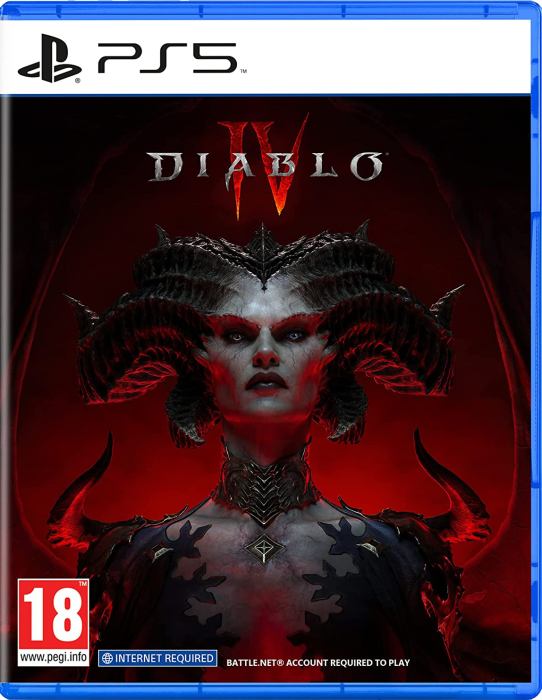
Pros
- Return to a more traditional, dark, gritty Diablo tone.
- Addictive gameplay loop with even deeper endgame.
- Robust, customizable builds that encourage experimentation.
- Compelling, fresh antagonist in Lilith.
Cons
- Always online requirement.
- Open world busywork and bloat.
- Somewhat limited enemy variety.
- Going to consume hundreds of hours of your life.
The launch of Diablo 4, the latest game in Blizzard’s venerable Diablo franchise, looms, and, given the mixed fan reception of some previous Diablo games, many are wondering if the newest Diablo game will be another immortal blunder, or a resurrection of a beloved action role-playing game franchise?
The Always-Online Controversy
First, to address the obvious concerns. Diablo 4 is an always-online game, even on consoles. There’s no offline mode. You won’t be enticed into investing in cosmetic purchases as easily if you don’t have to see the swag other players have purchased. That said, the “dreaded” Battle Pass didn’t darken the review builds we had access to, so we can’t comment on what effect, if any, they’ll have on the game at launch. The game also ran smoothly on both PlayStation 5 and PC, with a few technical hiccups that didn’t sufficiently detract from the experience to be worthy of a demerit: rare rubberbanding, an issue with button inputs not working after resuming play from extended bouts of leaving the game idle and a handful of crashes between the entire Gamer Guides team. Most of these crashes were dungeon-specific, and the issue was fixed via a patch the very next day, hopefully suggesting that any launch issues will be swiftly remedied.
Despite being always-online, there’s not a lot of content that actually requires multiplayer, cooperative or competitive. Most fights will be easier with friends (having somebody to draw aggro just makes everything easier), but aside from World Bosses, the incentive to play with others is surprisingly limited. Drops are instanced, most late-game items of any worthwhile rarity aren’t tradeable, and aside from Nightmare Dungeons, enemy levels and XP scale to the player (or the minimum level for that area/difficulty, whichever is higher). Good news for gamers who were hoping that the online requirement for Diablo 4 wouldn’t be onerous, but if you were hoping for a proper Diablo MMO, or at least some major gameplay justification for requiring a constant internet connection, that doesn’t appear to be the case.
Despite being always-online, there’s not a lot of content that actually requires multiplayer, cooperative or competitive.
A Lackluster PvP Experience
As for the game’s PvP offerings, they’re quite scant at launch. A few subregions of the map are designated as PvP areas, and killing enemies in these zones will earn you Seeds of Hatred. Accumulate these seeds and you can exchange them for cosmetic items via a unique merchant in a nearby town. The catch? These Seeds of Hatred have to be converted into Red Dust at one of several Altars of Extraction lying throughout the zone, and this process takes time. Fend off waves of enemies and, perhaps, other players in order to cash out and you’ll be able to buy some of these cosmetic items. You can also engage unique bosses prowling the PvP zone in order to score a prodigious amount of Seeds of Hatred, or hunt other players for whatever Seeds of Hatred they’ve accumulated. Ironically, the PvP rewards don’t actually require you to engage in any PvP, and with the lightly populated servers that were active during the review build, harvesting Seeds of Hatred was a strictly PvE affair.
Whether such a low-stakes PvP mode will be enough to sate bloodthirsty gamers is certain to be a subject of some contention, and perhaps nothing will surpass the rose-tinted simplicity of ganking each other in the Blood Moor, but as lackluster as it is, Diablo 4’s PvP mode is already better than what little Diablo 3 ever offered. We personally don’t play Diablo games for the PvP experience, which is probably a good thing considering how much of an afterthought it has always been, and the lackluster PvP mode certainly doesn’t detract from the main loot-grind that has always been the main draw of the franchise.
Dedicated PvP modes are mostly limited to laundering Seeds of Hatred into currency you can use to unlock cosmetics.
Exploring the Open World of Sanctuary
Whatever misgivings we may have with the game’s surprisingly lackluster dedicated multiplayer content, the core of the game - killing hordes of demons and scoring increasingly epic loot to fuel more outrageously powerful builds - is more robust than ever. Diablo 4’s open-world map (a series first, although the map is closer to Kingdoms of Amalur in scale and design than, say, Skyrim) is full of diversions, including cellars, events, dungeons, strongholds and, of course, an endless menagerie of enemies randomly populating all the dead space in between, including “Extremely Rare Monsters”, which are unique Elites, but not quite bosses. Scattered throughout this hostile world you’ll find the odd town or settlement, which usually comes with the obligatory waypoint (fast travel nodes) and a variety of merchants and craftspersons offering their services.
Aside from the loot and XP you’ll gain from indulging in violence, you’re further incentivized to explore in Diablo 4 due to the game’s Renown system, a secondary form of XP gained by completing the game’s open-world content. Filling out the map, claiming Waypoints, completing side quests, purging dungeons and conquering strongholds all earn you Renown, as does seeking out hidden Altars of Lilith Statues throughout the world. Earn enough Renown and you’ll gain various useful rewards, including Skill Points and extra Potion charges. There are also plants you can harvest, ore seams you can mine - pretty much every open-world trope save for a fishing minigame.
Seeking out collectibles like Altars of Lilith will earn you Renown - a way to incentivize you to delve into Diablo 4’s open-world bloat.
While there’s undeniably a lot of stuff to do in Diablo 4, a lot of it doesn’t come across as something you’d expect - or want - to do in a Diablo game, and however incentivized you are to search every nook and cranny, lucrative busywork is still busywork. This is all compounded somewhat by the sheer size of Sanctuary - Diablo’s “Earth” (or Prime Material Plane, for you Dungeons and Dragons nerds out there). The game world is clearly designed to be traversed by horseback, another new feature in Diablo 4, but you don’t get a mount until surprisingly late in the main campaign, and even with mounts and Waypoints, the size of each zone and the numerous obstacles that require you to climb or jump (horses aren’t great climbers, by the way) mean you might just end up roaming around on foot anyway.
While there’s undeniably a lot of stuff to do in Diablo 4, a lot of it doesn’t come across as something you’d expect - or want - to do in a Diablo game.
Your slog across Sanctuary is made even more tedious by a somewhat limited variety of enemies and repetitive biomes. A good number of foes you’ll fight are basically just humans, be they cannibals, bandits, pirates or cultists, they just don’t feel as varied or interesting as the corrupted rogues or the Zakarum zealots from earlier games, and if you’re sick of stinging swarms of insects that slow you down as you trudge through the sun-baked badlands of the Dry Steppes, you’ll be just as tired of them in the dunes of Kehjistan and the swamps of Hawezar. As fun as it is slaying iconic, returning enemies like fallen, goatmen, succubi and balrogs, you could probably have shrunk Diablo 4’s map by at least a third without losing anything of particular interest - but then again, an overabundance of desert and swamp/jungle regions that overstay their welcome is fairly on-point for a Diablo game.
Dungeon runs are central to Diablo 4’s loot-grind, and are usually presided over by a dungeon boss of some description.
Events, Dungeons and Strongholds, Oh My!
The open world nature of Sanctuary may carry some unwanted baggage, but things turn for the better once you finally reach one of the aforementioned points of interest populating the map: cellars, events, dungeons or strongholds. Events are a catch-all term for randomly spawning activities (albeit in static locations) across Sanctuary that usually involve you killing hosts of enemies on a timer or while protecting a random NPC. Do well and you’ll earn a “mastery” bonus that improves your reward by giving you a more lucrative chest to plunder. These short little bits of gameplay tend to only last a minute or two and repopulate every several minutes, making them a fine diversion as you explore, and may be worth going out of your way to farm once you learn the locations of several of them. Completing events earns you, among other things, Murmuring Obols, which is a form of currency you can use to buy gear of random quality from “Purveyors of Curiosities” - Diablo 4’s gambling mechanic. The odds of getting a high-quality item from gambling is actually fairly high, and since you get to choose what type of item you gamble for (weapons, boots, helmets, rings, amulets, etc.) you can use gambling to supplement whatever the RNG gods have overlooked. Cellars are similar to events, save they take place in their own little mini dungeons and are less lucrative.
Dungeons are your proper unit of gameplay substance in Diablo 4. Each dungeon is its own unique location you have to zone into, being semi-randomized set pieces that are nonetheless a welcome break from the overworld map. Enter a dungeon and you’ll usually be tasked with completing various objectives: killing all enemies in an area; sacking some effigies; headhunting some specific elite enemies to score the keys or anima they yield when defeated; pick up an object and drag it to a destination, or pull some lever(s) to open a gate, after which you’ll be able to progress into the dungeon’s depths where a boss (usually) awaits. Dungeon runs are fine sources of loot, but you also earn a specific Aspect the first time you clear a dungeon. Aspects are essentially identical to the legendary-specific mods that spawn on legendary-tier gear, albeit at the lower end of that stat range for that particular legendary mod. Not as good as finding (or gambling for) a legendary item with the mod you need, but when luck isn’t on your side, being able to just create your own legendary item is welcome, especially when the legendary mod in play is the linchpin for a build you’re shooting for.
Finally, there are strongholds - the standout elements of an area - which are small overworld regions that have completely, but perhaps not irrevocably, fallen to hostile forces of some nefarious description. Your objectives in each stronghold will change, but they generally involve either recovering or destroying some objects or headhunting some elites before invariably confronting a boss enemy - not all that different from clearing a dungeon but usually with a regional storyline attached. Conquering a stronghold will often convert that area (at least in part) into a safe zone, sometimes unlocking merchants and a new Waypoint, and some dungeons and side quests can’t be started or advanced until a specific stronghold is cleared. In addition, clearing strongholds nets a massive boost to Renown, which yields its own rewards.
Diablo 4 has four World Tiers - or difficulty modes - two of which can only be unlocked by completed Capstone Dungeons.
World Tiers and Endgame Difficulty
After you clear the dozens of cellars, dungeons and strongholds Diablo 4 has to offer, you’ve still only scratched the surface of the content this game has to offer. As is the norm for Diablo games, the pool of endgame content is surprisingly deep, and for many players the real game begins after the story is complete. There are four difficulty levels in Diablo 4, called “World Tiers”, albeit with recognizable enough names attached to keep old-timers like ourselves happy. World Tier 1 and World Tier 2 (Adventurer and Veteran) both constitute the game’s “normal” difficulty, with Veteran giving a minor buff to enemies in exchange for a small boost to gold and XP earned.
As is the norm for Diablo games, the pool of endgame content is surprisingly deep, and for many players the real game begins after the story is complete.
Once you clear the main questline, however, you’ll be able to unlock World Tier 3 (Nightmare) and later, World Tier 4 (Torment) difficulties. You have to prove your competence to gain access to these higher difficulties, however, something you’ll demonstrate by clearing different Capstone Dungeons, the first of which is locked at a minimum level of 50 and the latter at a minimum level of 70. Unlocking higher difficulties will, of course, make enemies relatively more powerful compared to your character, but doing so also unlocks higher tier loot and more activities, the most prominent of the former being unique items and of the latter, Nightmare dungeons and Helltide events, which collectively allow you to continue grinding to achieve even higher pinnacles of power.
While there are some rules and prerequisites, you’re mostly free to invest in the skill tree as you see fit.
Skill Trees and Builds
Speaking of gaining power, the familiar old gameplay loop is alive and as robust as ever in Diablo 4. Your adventure starts out generically enough: you kill enemies, you level up and you gain skill points to invest in a skill tree. The skill tree in Diablo 4 consists of a series of loosely grouped tiers of skills clustered in a starburst formation including both active and passive skills you can freely invest in. Some skills require you to invest in others first (you can’t purchase passive skills that modify the functionality of active skills before unlocking said active skill first, for example), and each tier of skills is gated by a brute points requirement. Your build isn’t completely freeform due to these requirements, but in practice there’s nothing stopping you from ignoring an entire tier of skills if you’d prefer to just over-invest in another, and despite the threats made by developers, the cost of respeccing was negligible throughout the entire span of the game we played, which took us well into Nightmare difficulty. It’s not as free-form as Diablo 3 was, but there also aren’t significant barriers preventing you from experimenting - or even tearing out and replacing skills you had been heavily invested in with others if you find a combination of legendary mods that works better.
Most skills in Diablo 4 consume some sort of limited resource, or operate on a cooldown, with only your most basic skills being truly free. This encourages you to pick a smart mix of skills based on what resources they consume, the lengths of their cooldowns, and how the skills play off each other. There’s not much point in investing in several offensive skills that all are competing for the same mana or essence pool, for example, and while you can fill your hotkeys up with potent skills with minute-long cooldowns, doing so will likely leave you offensively crippled during longer fights. Once you assemble a mixed batch of skills that synergize well, however, builds can become spectacularly fun and addictive to play: mixing up Frost Nova to freeze all nearby enemies and inflict them with the vulnerable debuff before shooting barrages of Ice Shards that ricochet off frozen enemies and finishing up with Frost Bolts that explode on frozen enemies (essentially become hard-hitting, resource-free ice-fireballs) was a great little gameplay loop. More importantly, cobbling together these builds kept us on the lookout for gear that would further boost our stats or lead us down entirely new builds.
Once you assemble a mixed batch of skills that synergize well, however, builds can become spectacularly fun and addictive to play.
The Loot Grind
Just as important as the skills you’ll use is the gear you’ll equip, and at first Diablo 4 doesn’t deviate much from the established formula. You’ll find a variety of color-coded loot drops that gain more mods as their rarity tier increases; white for common, blue for magic, yellow for rare, you’ve done this all before. Where things get interesting is legendary-tier gear, which took a surprisingly long time to drop (we were level 29 when we got our first legendary in the review build - much longer than in the betas), but once they start falling you’ll accumulate them fairly regularly. Accompanied by a golden pillar of light and an enticing chime sound, it won’t be long until you’re Pavlovianly manipulated into seeking these orange nuggets of positive reinforcement out, as legendary items form the backbone of any build.
In addition to potentially having more or higher stats than rare items, legendary gear also has a random legendary mod that alters how a skill or gameplay element works. Take the cold Sorceress we alluded to above - a build that focused on freezing enemies, against which many of her other skills became considerably more potent - and add effects like the ability to boost damage against frozen enemies further, or allow Ice Shards to pierce frozen enemies, or give Frost Nova two charges at the expense of increased cooldown. All of these modifications come courtesy of legendary gear, and finding the perfect mix of legendary mods and skill combinations becomes an intoxicating obsession.
Diablo 4 excels at the most important aspect of a Diablo game: Killing hordes of demons for loot drops that push your build further.
The stats on gear are also random, so while you may find a great legendary modifier that compliments your build well, having it add bonuses to the wrong skill, boost a damage type you don’t inflict, or bolster your offense against enemies stricken by a debuff that’s not in your repertoire leaves room for improvement. On top of all that, your gear doesn’t level with you and will eventually become obsolete (especially weapons, whose DPS improves with level), although a good legendary mod does provide a surprising amount of staying power. Gear obsolescence, a long-existing gripe of ours, possibly exacerbated by having less time to invest in games now than we did, say, twenty years ago, hasn’t been resolved, but hasn’t been completely ignored, either. You can take gear to an Occultist and extract legendary mods from one item (destroying it in the process) and add it to another (overwriting any existing legendary mods), which does remove the sting of finding a great legendary early or finding a legendary mod you want on an item that otherwise has stats that don’t help you.
Paragon Levels and End-Game
Once you reach level 50 (for most people around the end of the main campaign) you’ll stop gaining skill points when you level up and instead will start to gain Paragon Levels - a returning feature from Diablo 3. At this point, the level bar will be segmented into four parts: you’ll gain a Paragon point when you fill each section, and your level will still increase when the whole level bar is full (a mixed blessing - it increases your stats, but also increases the level of loot drops and enemies). Paragon points are spent unlocking upgrades via a grid, and while most of these upgrades are simple stat bonuses, scattered across the Paragon board are magic and rare nodes that yield numerous and sometimes novel bonuses.
Further enhancing the dynamic nature of Paragon leveling are Glyphs, which can be installed in Glyph Sockets. While the locations of these Glyph Sockets are static across boards, you can choose which Glyph you install, and the potency of Glyphs influences (and in turn is highly influenced by) what other nodes are in the vicinity. Glyphs have a radius effect, enhancing the effects of specific nearby nodes or unlocking more properties if enough nodes providing certain bonuses are nearby. For example, one Glyph we found boosted the effects of all rare nodes within its radius by 50%, and if enough unlocked Dexterity nodes were in range, it would also give us a damage buff immediately after we used specific skills. What nodes you unlock, what Glyphs you install and where you install them all play a huge role in progressing your character past level 50.
The revamped Paragon system adds a great deal of customization to builds, and allows you to continue to progress even after hitting level 50.
If that’s not enough, crossing a Paragon board will allow you to install and rotate the orientation of new boards. Different boards have different nodes to unlock, and rotating the boards allows you to connect them in various ways, giving you access to some nodes faster than another orientation would allow. Do you spin the board 180 degrees to access that legendary node, or do you build towards a new Glyph socket, instead? Do you install a board that boosts a certain damage type, or synergizes with a debuff you frequently inflict, or one that increases your survivability? Like skill points, paragon points can be refunded for a fee that increases as your level does, and entire boards and glyphs can also be removed, further encouraging you to experiment and push your builds further. The fact that none of this even unlocks until you’re done with the campaign attests to the game’s potential longevity, and constantly gaining new points to invest, nodes to unlock and drops with stats and mods to fuss over suggests an incredible amount of depth that keeps things fresh and engaging even dozens of hours in.
Story Elements (Spoiler-Free!)
The story campaign for Diablo 4 serves as a barrier to some of the game’s juiciest loot-grind morsels, and potentially a source of contention for the fanbase, with many gamers hankering for a pivot away from the more colorful, cartoony art style of Diablo 3 and a return to the dark, oppressive, bloody atmosphere in Diablo 2. If you’re in that camp, you’ll be happy to know that Diablo 4 delivers, but the narrative is more than an homage to the classics.
We all know how a proper Diablo game starts; something goes bump in the night (usually in the vicinity of Tristram and a call to arms goes out that attracts a host of would-be adventurers with a skill set uniquely suited to combating the hordes. In Diablo 4, your protagonist may have the pedigree, but not the motivation, and there is no grand, unified response by the forces of light. Instead, your protagonist suffers a mishap on the road, then stumbles into a bad scenario which alerts you to the escape of Lilith, a powerful demoness whose motivations are unknown, but the euphoric, devoted, violent hysteria she leaves in her wake suggests she’s not up to anything good.
Despite the aberrant start to the game, your protagonist will soon find themselves in a familiar role, falling in as the fixer as you gather a variety of allies with diverse - sometimes conflicting - goals, motivations and skill sets. You might not know the political landscape or be able to decipher ancient texts, but if there’s a host of demons that needs a good thrashing (and this is a Diablo game, where there’s always demons in need of violent reprimand), it’ll be left up to you.
These characters pop in and out of the narrative as circumstances demand and ultimately feel more fleshed out than any character in previous games not named Deckard Cain. Moreso, the game is heavy-handed with its shades of gray storytelling; none of your companions are faultless champions of light, and their faults - and diversions necessary to mitigate or overcome said faults - takes up a not insignificant amount of the main questline’s focus. Each of the game’s acts not only features a new geographical region, but seems to focus - at least in part - on one of your companions and the harsh lessons they must learn in Lilith’s wake.
As for Lilith herself, she remains an elusive figure for most of the game’s narrative, her actions only seen via Blizzard’s staple and stellar cinematic storytelling at irregular intervals due to the blood bond formed at the beginning of the game. These flashbacks are usually when the story burns brightest due in part to some excellent voice acting from Caroline Faber (Lilith) and Ralph Ineson (Lorath) supported by incredible sound design. Lilth possesses nuance that some of the series’ regular antagonists lack, and while the ultimate payoff of her storyline is a bit disappointing, it’s nice to see the focus shift away from the Prime Evils and focus on a new member of the Diablo cosmology for a change.
Lilith possesses nuance that some of the series’ regular antagonists lack… it’s nice to see the focus shift away from the Prime Evils and focus on a new member of the Diablo cosmology for a change.
In addition to new characters and novel narrative beats, at least for a Diablo game, the main campaign in Diablo 4 is also handled in a fundamentally different way, giving the player an unprecedented amount of freedom. Shortly after reaching the first town the main questline will fragment into three, and you won’t be mandated along a particular course of action. You can complete any of the game’s first three acts as soon as the relatively linear prologue section ends, and while some of these regions are soft-gated by level, nothing prevents you from just wandering around, exploring, and completing events and dungeons until you’re sufficiently-leveled to go wherever you please. Enemies will generally scale up to your level, too, so there’s no real penalty for playing things out of order, although a few quests did seem to lag behind by a few levels, for whatever reason.
Hail Lilith!
With a compelling new antagonist, a serviceable, character-driven story, and a familiarly satisfying gameplay loop with an incredible amount of depth, Diablo 4 is a worthy entry into the franchise, one that threatens to literally burn many hours of your life grinding for that next choice legendary with just the right stats to supercharge your build. It doesn’t hit every note perfectly, as it suffers from open world bloat and the always-online requirement seems extraneous at best, but Blizzard’s latest offering should please the majority of Diablo fans, both old and newcomers alike. Hail Lilith indeed!
Note: This review was based on a pre-release build and code provided by Blizzard Entertainment. Gamer Guides® is not affiliated with Blizzard Entertainment in any way.
Return to Form
With a compelling new antagonist, a serviceable, character-driven story, and a familiarly satisfying gameplay loop with an incredible amount of depth, Diablo 4 is a worthy entry into the franchise that threatens to burn away many hours of your life.
Gameplay:
Sound:
Graphics:
Story:
Value Rating:


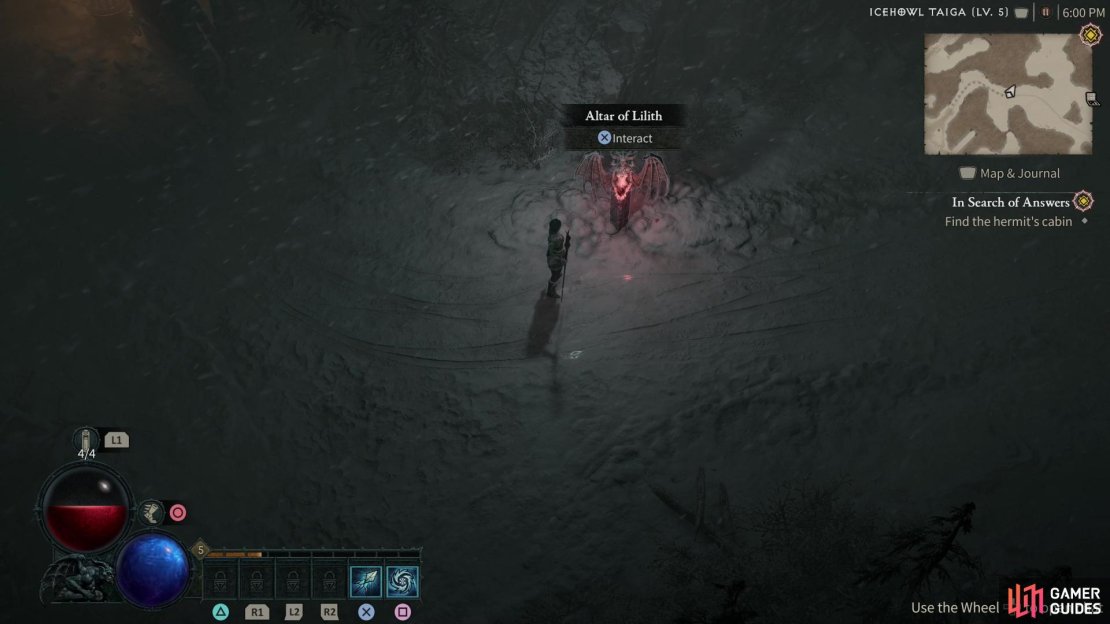
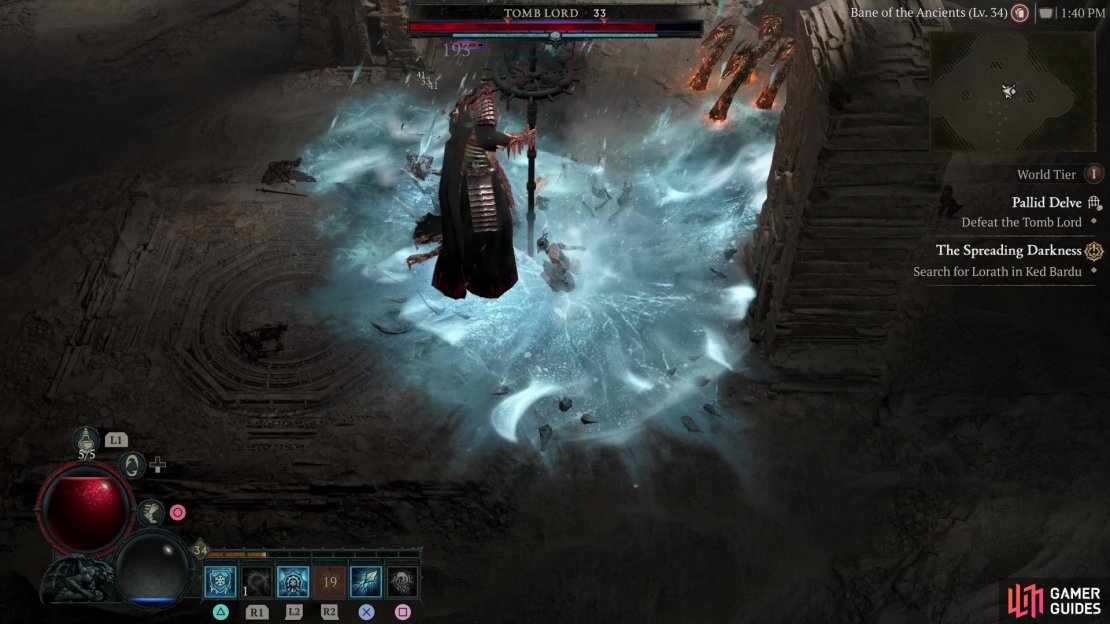
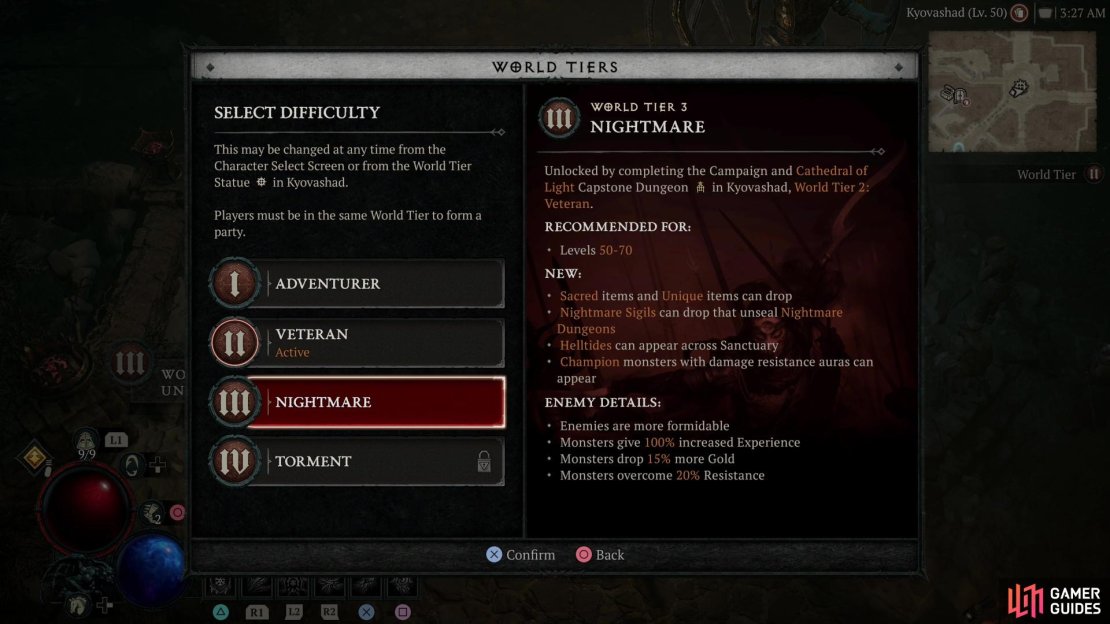
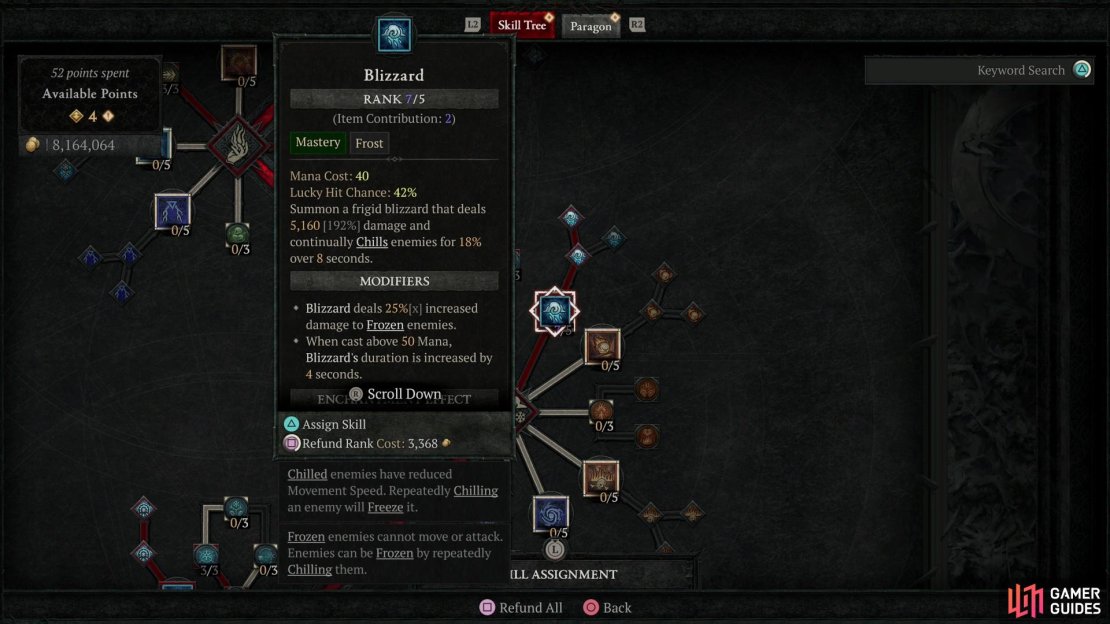
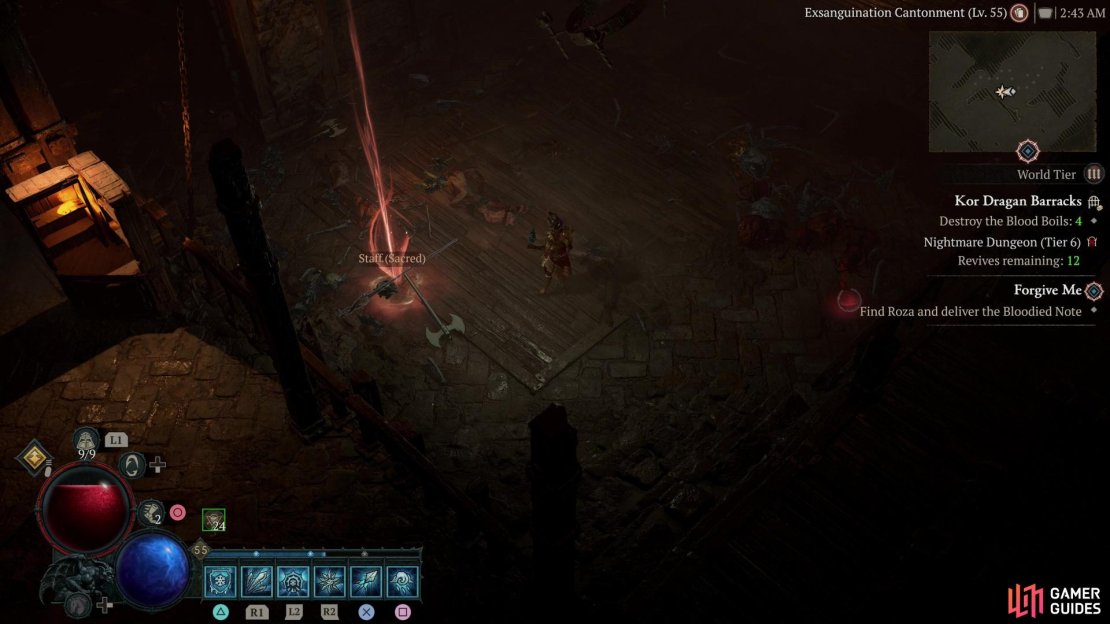
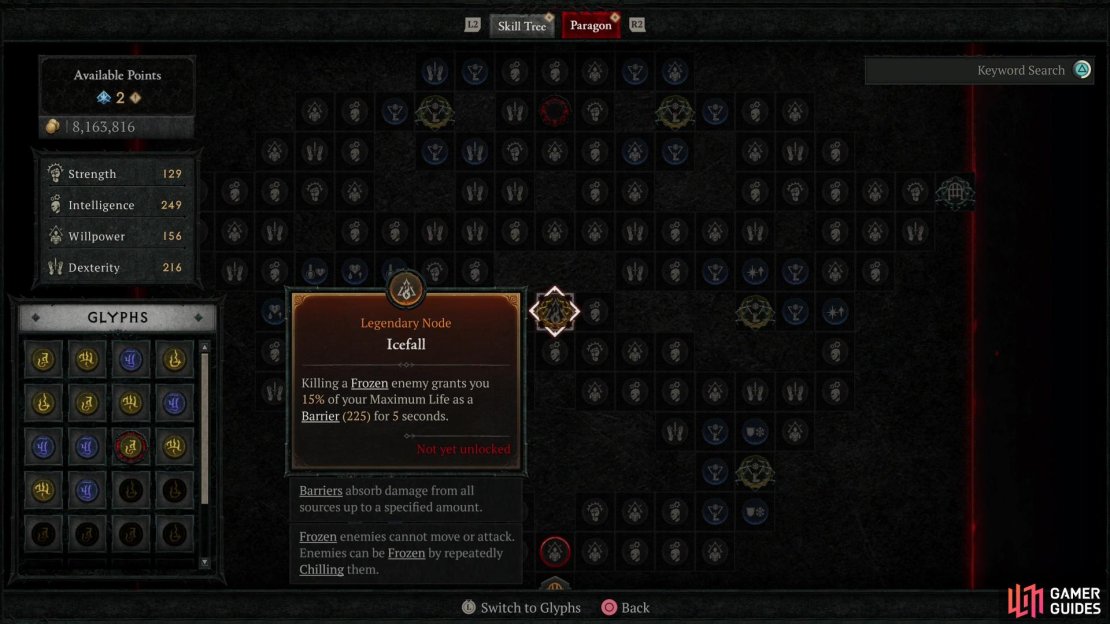
No Comments